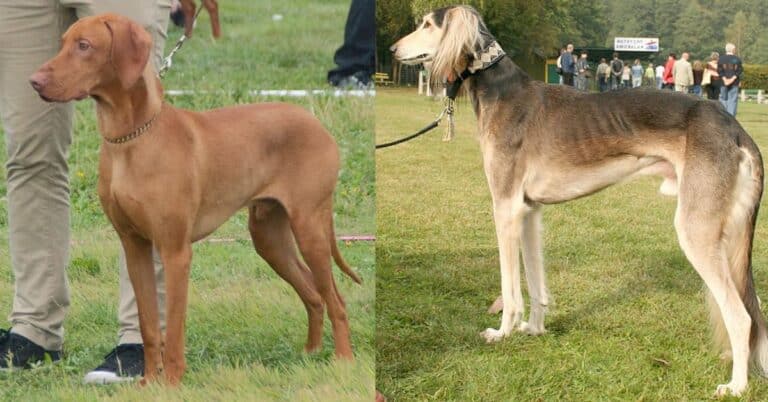Retinal Detachment in Dogs
The retina is a layer of tissue that covers the inside of the back wall of the eye. When light passes through the eye and strikes the retina, special cells within the tissue convert light energy into nerve impulses, which are then transmitted to the brain via the optic nerve. The retina receives nourishment through its close attachment to underlying parts of the eye (the choroid). If the retina begins to lift away from the back of the eye, the tissue can no longer perform its functions, and depending on the degree of retinal detachment, blindness may result.
Many different diseases can lead to retinal detachment. In some cases, the retina and/or other parts of the eye may not form normally during development. For example, retinal detachment can be part of the syndrome known as collie eye anomaly, a common inherited disease affecting collies, Shetland sheepdogs, and border collies.
Other cases of retinal detachment occur as a result of injury or illness that affects an otherwise normal eye. Vessels underneath the retina may leak blood or fluid and separate the layers of tissue.
Causes include:
- Trauma to the eye, resulting in retinal tears or bleeding behind the retina.
- High blood pressure, which may be secondary to kidney disease, hyperadrenocorticism (Cushing’s disease), or other disorders.
- Diseases that weaken the walls of blood vessels.
- Disorders of blood clotting.
Deep eye infections can cause inflammatory cells and debris to collect under the retina. These infections may be limited to the eye or have spread there from elsewhere in the body. A dog can also develop an abnormal immune response against its own retina or choroid. This disorder is called immune-mediated retinochoroiditis and is probably the most common cause of retinal detachment in an otherwise healthy adult dog. Retinal detachments are also a possible post-operative complication with some types of eye surgery. Dogs can develop detached retinas for other reasons, but sometimes the condition seems to develop without an underlying cause.
Symptoms of Retinal Detachment
The symptoms of retinal detachment vary with the amount of damage that has occurred. If only one eye is affected or if both eyes have minimal changes, most dogs behave normally and owners are unlikely to be aware of any problems. Complete retinal detachment in both eyes causes blindness. If vision is lost slowly, many dogs adapt so well that their owners bring them into the veterinarian complaining only of poor eyesight rather than blindness. Dogs that suddenly become blind, however, are often disoriented and nervous and may stumble, bump into objects, and fall. Other symptoms may also develop as a result of disease elsewhere in the dog’s body.
Diagnosis
Because many cases of retinal detachment are associated with more widespread disease, veterinarians will perform a thorough health work-up and not just look at the dog’s eyes. A complete history and physical exam is the start of the process. Blood work, a urinalysis, a fecal exam, blood pressure testing, and other diagnostic tests will likely follow. To determine the extent of retinal detachment and the health of the rest of the eye, the veterinarian will use an ophthalmoscope or other instruments that illuminate and magnify the eye’s internal and external structures. Referral to a veterinary ophthalmologist for additional diagnostic tests and treatment may also be necessary.
Treatment and Prevention of Retinal Detachment in Dogs
Treatment is first directed towards any underlying causes of retinal detachment that have been diagnosed. If an eye infection is to blame, systemic antibiotics are necessary so that the drugs can reach structures deep within the eye and eliminate sources of infection that may lie elsewhere in the body. If inflammation is the primary problem, oral anti-inflammatory medications (e.g. prednisone) are used. Some doctors also treat with a diuretic that may help remove fluid from behind the retina. If the front of the eye is also inflamed, topical medications may be used as well.
A retina can reattach itself to the back of the eye if any underlying causes are quickly brought under control. In some of these cases, vision will return. However, if a dog’s condition does not improve within a week or two after starting treatment, the prognosis for return of eyesight is not good. Retinas that remain detached eventually deteriorate and can no longer function. Treatment for congenital forms of retinal detachment (i.e. birth defects) is not effective, but in most cases, these abnormalities do not get worse with time. If a dog has no sight in an eye that is painful or otherwise bothersome, surgically removing the eye may be the best option.
People with detached retinas are frequently treated with lasers or extremely cold probes that “tack” the retina back down to its underlying tissues. These procedures are not performed frequently in dogs, but they can be used in certain cases (e.g. retinal tears).
Prognosis
Dogs with non-progressive, partial retinal detachments or those with only one affected eye compensate extremely well and may show no symptoms whatsoever. Some cases of complete retinal detachment in both eyes resolve with timely treatment, but even if vision cannot be restored, blind dogs can live long and satisfying lives if their owners take a few common sense precautions:
- Do not move objects in the dog’s environment without showing the pet what changes have occurred.
- Make sure the pet is well aware of the location of its food and water bowels and can easily get to them.
- Block the dog’s access to bodies of water (e.g. pools) and places where falls are likely, like stairs and decks.
- Walk blind dogs on leashes and/or give them access to well-known, fenced areas.
- Time spent with one or two well-mannered canine friends is fine as long as none of the dogs seem to get upset by their interactions, but avoid contact with large groups of disorderly pets.
Article by:
Jennifer Coates, DVM graduated with honors from the Virginia-Maryland Regional College of Veterinary Medicine in 1999. In the years since, she has practiced veterinary medicine in Virginia, Wyoming, and Colorado and is the author of several short stories and books, including the Dictionary of Veterinary Terms, Vet-Speak Deciphered for the Non-Veterinarian. Dr. Coates lives in Fort Collins, Colorado with her husband, daughter, and a menagerie of pets.

Having discovered a fondness for insects while pursuing her degree in Biology, Randi Jones was quite bugged to know that people usually dismissed these little creatures as “creepy-crawlies”.







